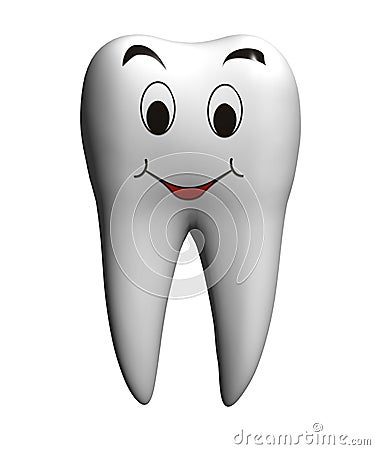
ALLENTOWN, Pa. – No money? No problem! Pay with time, instead.
That's what Maria Villacreses did when the economy put a hitch in her wedding plans: She used "time dollars" on everything from a wedding-day makeover to an elaborate seven-layer cake.
In a modern twist on the ancient practice of barter, people like Villacreses are joining time banks to help them get the things they need or want without having to spend cash.
In a time bank, members get credit for services they provide to other members, from cooking to housekeeping to car rides to home repair. For each hour of work, one time dollar is deposited into a member's account, good for services offered by other members.
Scores of time banks are being started in hard-hit communities around the nation — and thousands of devotees are helping each other survive tough financial times.
"Even though we were planning to do something small and simple, it takes a lot of money, time and effort. Through time banking, I got a lot of help," said Villacreses, who belongs to Community Exchange, a 10-year-old time bank in Allentown, where 500 members offer everything from electrical work to tai chi.
As the economy recovers amid stubbornly high unemployment, newer banks with names like "Back On Track" have joined Community Exchange in offering an alternative to cash. Time Banks USA, an advocacy group in Washington, says interest in time banking has surged: About 115 now operate nationwide, with 100 more in early stages of development. Membership fluctuates but is believed to total more than 15,000.
"People see time banking as a way to deal with the economic pressures they are feeling," especially in places hit hardest by the recession, said Jen Moore, membership and outreach coordinator for Time Banks USA.
In Maine, where paper mills and shoe manufacturers have closed, time dollars buy everything from guitar lessons to yard work — even prayer. In California, they buy haircuts, tax help and aromatherapy. In Michigan, child care, plumbing and yoga.
In South Carolina, Back on Track Charleston was launched recently to help down-on-their-luck residents get, well, back on track. It's already got 80 members.
Winborne Evans relies on Back on Track to supply her with baby-sitting while she picks up extra shifts as a waitress. She's also using time dollars, which she earns by sitting for other members' kids, to help get her fledgling beekeeping business off the ground.
"Becoming a single mom recently ... I truly can't imagine where I would be without it, mostly because I can't afford a baby-sitter, and I can't afford to pay people to help me with my bees," said Evans, 29.
Unlike bartering, transactions in time banking are not usually reciprocal. Instead, Jane baby-sits for John, John fixes Mary's leaky faucet, Mary drives Tom to the doctor's office, and so on, all of them earning and spending time dollars. Their labor is valued equally: One hour is always worth one time dollar. (Time dollars are not taxable, according to Time Banks USA.)
People often join for economic reasons but wind up getting more out of it. Among the benefits: networking, getting to know neighbors, building a sense of community and keeping skills sharp.
"Part of it is very practical," said Judith Lasker, a professor at Lehigh University in Bethlehem who is co-writing a book on time banking. "There's another part of it that's very ideological. People believe the best way to survive in this crazy, unpredictable world is to forge local ties, support local economies ... and support local people in a variety of ways."
Services provided by Allentown's Community Exchange — including gardening, cleaning, cooking and transportation — have allowed 79-year-old Joan Stevenson to stay in her home and out of assisted living.
"I'm enriched by it, not only from the services I receive but by being able to contribute," said Stevenson, who earns time dollars by writing for the Community Exchange newsletter, hosting Community Exchange meetings at her house and helping other members with their resumes and job searches.
Time banks are labor intensive and can be difficult to keep going. Most of the successful ones eventually get a paid staff, either by raising grant money or affiliating with a larger organization. Lehigh Valley Hospital & Health Network, the Allentown region's largest employer, pays the small staff of Community Exchange.
Manager Laura Gutierrez said time banks are worth the effort.
"Since the economy has been poor, people need to be a little more creative about using resources within a community that might not have been considered resources in the past," she said.
Which is exactly what Villacreses did to salvage her wedding plans.
The 28-year-old, who is fluent in English and Spanish and earns time dollars as a medical interpreter and by offering rides and pet-sitting, thought she would have to scale back when her fiance's hours at work were cut in half. Then fellow Community Exchange members suggested she use time dollars to pay for services that would typically cost hundreds of dollars.
On the big day, the bride sat at her dining room table while a complete stranger, Marilyn Shive, did her makeup.
"Show me which colors you tend to like," said Shive, a Community Exchange member who sells beauty products.
As Shive applied foundation and eyeliner, another member of Community Exchange delivered the cake. Others brought food and decorated the sanctuary and reception hall. During the service, time bankers took photos and played the organ.
In all, the wedding cost about 200 time dollars. By spending her time wisely, Villacreses figures she saved about $2,000.
Source <
http://news.yahoo.com>


 1:11 PM
1:11 PM
 Antoine
Antoine









